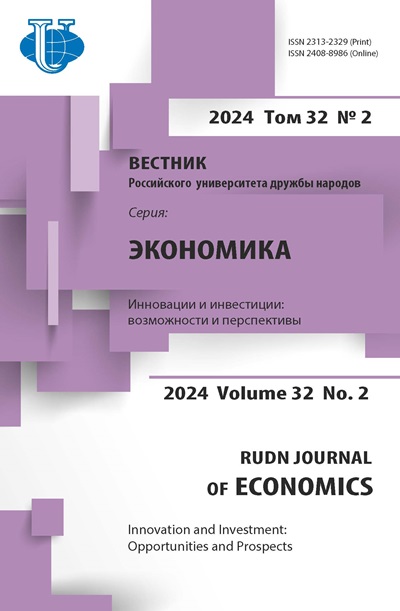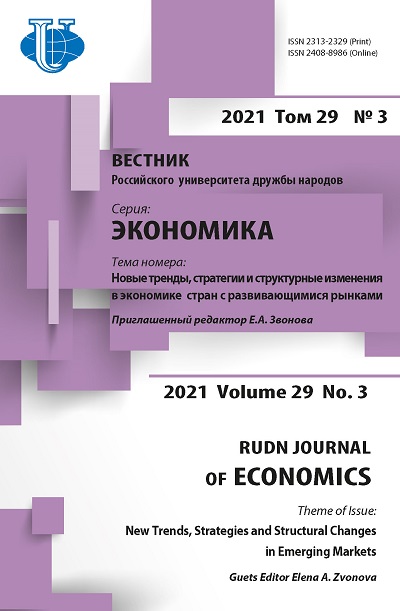Что же происходит в экономике «мирового локомотива», или Мифы о восстановлении Китая
- Авторы: Решетникова М.С.1, Пугачева И.А.1
-
Учреждения:
- Российский университет дружбы народов
- Выпуск: Том 29, № 3 (2021): Новые тренды, стратегии и структурные изменения в экономике стран с развивающимися рынками
- Страницы: 575-586
- Раздел: Экономика развитых и развивающихся стран
- URL: https://journals.rudn.ru/economics/article/view/27613
- DOI: https://doi.org/10.22363/2313-2329-2021-29-3-575-586
Цитировать
Полный текст
Аннотация
Пандемия COVID-19 нанесла непоправимый ущерб экономикам всех стран. Предполагается, что ведущие игроки мировой экономики только начинают справляться с ее последствиями. Однако ведущие мировые организации уже сообщают о преодолении кризиса в Китае. Цель статьи - проанализировать текущее состояние экономики Китая и ответить на вопрос, преодолела ли она все кризисные явления. В рамках исследования проанализированы такие показатели, как ВВП, уровень долга, уровень внутреннего спроса, активность на финансовом рынке и рынке слияний и поглощений, а также технологическая и социальная политика Китая и структура торговли. Для анализа количественных показателей использовалось сочетание методов сравнения и классификации, медиасканирования и краудсорсинга. Информационная база основана на ежегодных справочниках, издаваемых официальными учреждениями Китая, Всемирного банка, Международного валютного фонда, статистических данных из международных изданий, посвященных экономике Китая. Анализ показал наличие триггерных ситуаций на фондовом рынке, на рынке инновационных инвестиций и в банковском секторе. Состояние кредитной системы также вызывает озабоченность. Доказано, что восторженные заявления о быстром восстановлении китайской экономики являются скорее обнадеживающим мифом, чем свершившимся фактом. Сегодня Китай находится только в начале выхода из кризиса, вызванного пандемией. Сможет ли он снова стать локомотивом глобального экономического роста, как в 2008 году? Ответ на этот вопрос остается открытым.
Ключевые слова
Об авторах
Марина Сергеевна Решетникова
Российский университет дружбы народов
Автор, ответственный за переписку.
Email: reshetnikova-ms@rudn.ru
кандидат экономических наук, доцент кафедры экономико-математического моделирования, экономический факультет
Российская Федерация, 117198, Москва, ул. Миклухо-Маклая, д. 6Ирина Алексеевна Пугачева
Российский университет дружбы народов
Email: 1032196331@rudn.ru
выпускник магистратуры кафедры экономико-математического моделирования, экономический факультет
Российская Федерация, 117198, Москва, ул. Миклухо-Маклая, д. 6Список литературы
- Chen, X. (2017). Reducing contribution rate, Pension Fund revenue and Pension Fund balancing in long term. Chinese Journal of Population Science, (3), 55-69. (In Chinese)
- Dong, K., & Park, D. (2019). Reforming pension insurance in the People’s Republic of China. Asian Development Bank
- Dong, K., & Wang, G. (2016). China’s pension system: Achievements, challenges and future developments. Economic and Political Studies, 4(4), 414-433
- Reshetnikova, M. (2020). Venture capital market in China: A new approach to innovation management. Utopía y Praxis Latinoamericana: Revista Internacional de Filosofía Iberoamericana y Teoría Social, (5), 252-264















